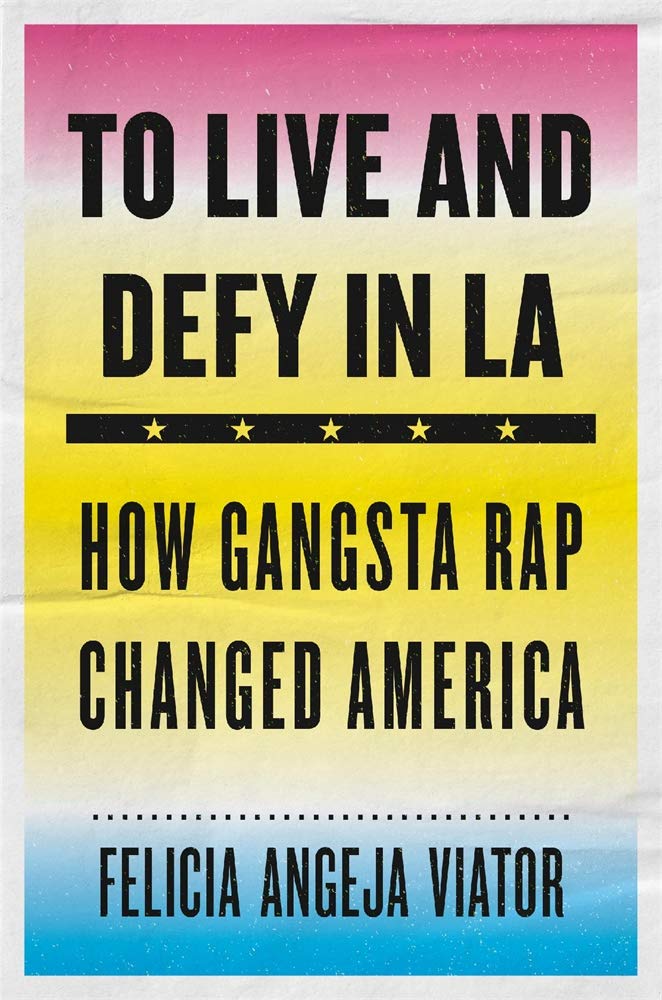Felicia Angeja Viator
To Live and Defy in LA: How Gangsta Rap Changed America (Harvard University Press)
Felicia Angeja Viator is assistant professor of history at San Francisco State University and, prior to that, she was a respected Bay Area DJ. But with this latest book, she turns her attention to L.A., which is wonderful because her understanding of the hip-hop music and the musicians that first emerged from the streets of L.A. in the ’80s is deep and profound.
The opening sentence of the introduction is immediately telling: “In the late 1980s, Los Angeles record producer Dootsie Williams concluded that black youths were oblivious to the racial oppression all around them.”
From there, Viator illustrates in vivid detail how rap music both educated and also provided a cultural backdrop. At its best, it offered an outlet. We go through L.A. icons such as Ice-T, Ice Cube and Dr. Dre, right up to contemporary artists including Kendrick Lamar.
On the press release, we’re asked how it is that dystopian gangsta rap could be born in surfy, sunny Los Angeles. Of course, we know how layered this region really is — the idea that L.A. could only offer bands with a Beach Boys vibe is crazy. But still, Viator’s examination of how the scene came to be is valuable.
“By the 1980s, deindustrialization, suburban flight, and California’s tax revolt had devastated predominantly black communities like South Central, Inglewood, and Compton, exacerbating the problems of unemployment and poverty,” Viator writes in the introduction. Voices were required and, as she points out throughout this book, we got them.

(Harvard University Press)
Advertising disclosure: We may receive compensation for some of the links in our stories. Thank you for supporting LA Weekly and our advertisers.

